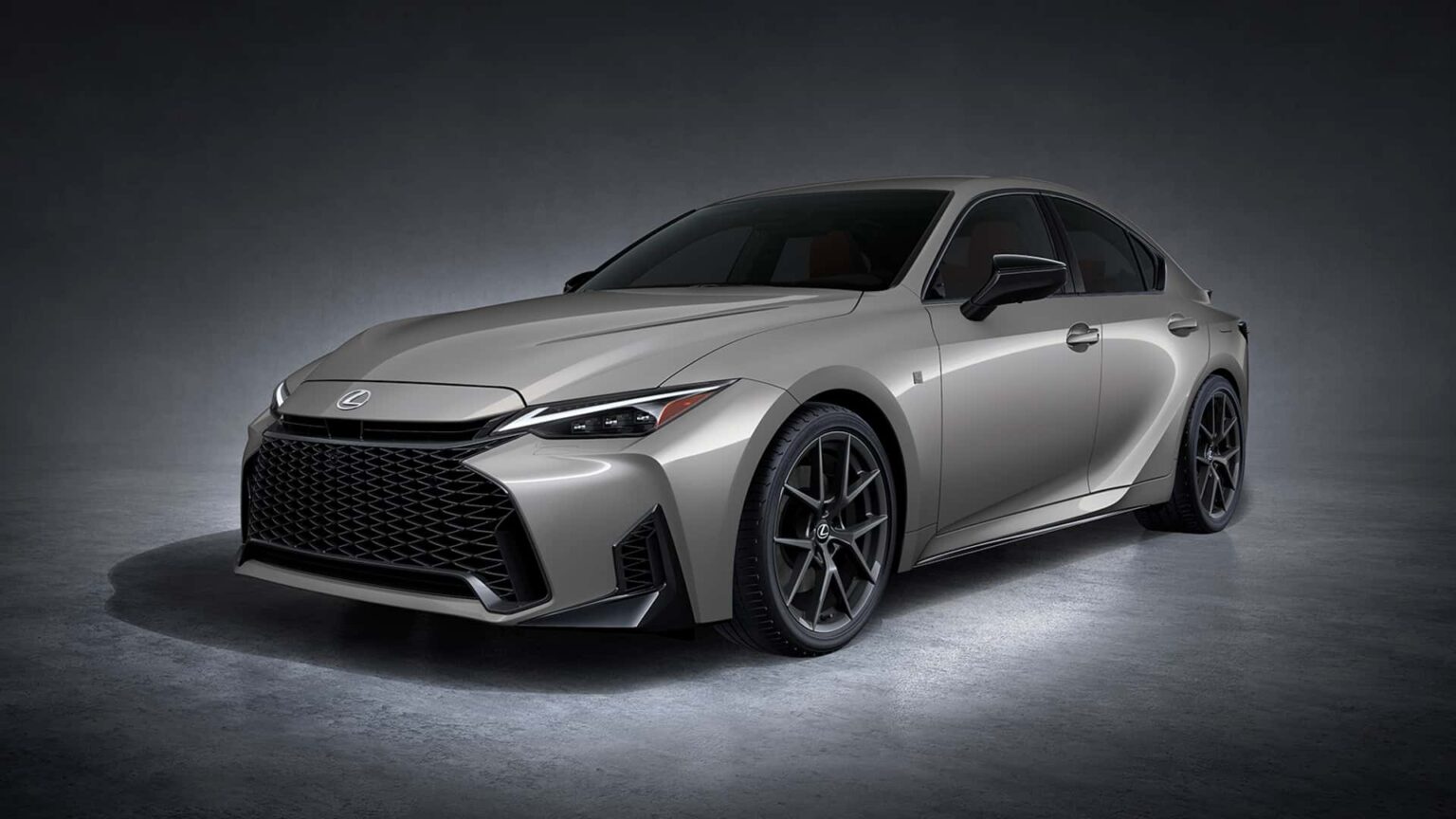When the new ES broke cover a few months ago, we began wondering whether Lexus would continue selling the smaller, aging IS. We are happy to report that the company’s entry-level sedan is sticking around. Better yet, it’s even getting an update. Toyota’s luxury brand calls it “new,” but it doesn’t appear to be a true next-generation model. Rather, it’s likely the third facelift for the current car, which has been around since 2013.
Not that we’re complaining. It’s good to have variety in a shrinking segment. Lexus has also pledged to keep the flagship LS in its otherwise SUV-heavy portfolio. The “baby” IS is largely the same and has an almost identical footprint. Only the overall length has changed, increasing by 0.4 inches (10 millimeters), likely due to reshaped bumpers. Width, height, and wheelbase carry over, reinforcing our belief that this is yet another update to the existing model.
Photo by: Lexus
The revised body can now be painted in a new Neutrino Gray, joining seven other available colors. Fresh 19-inch alloys are available, along with red brake calipers bearing the Lexus logo and a new rear spoiler. Inside, there’s a 12.3-inch digital instrument cluster paired with a touchscreen of the same size as standard equipment.
Lexus has also reworked the climate controls and removed the analog clock, while the circular vents have been replaced with more angular ones. The 2026 IS does a decent job of hiding its age inside, although the bulky gear lever is a reminder that this posh sedan has been around for a while.
At least the frustrating trackpad is gone. In its place are buttons for the heated and cooled seats, along with a volume knob. Elsewhere, there’s a wireless charging pad, USB-C ports, and a refreshed design for the door trims. Additionally, natural bamboo fibers now adorn the upper console and the bezel around the start button.

53
Source: Lexus
But there’s more to the 2026 IS than a mildly updated design and slightly reworked interior. Lexus has also fitted it with rack-parallel electric power steering for better handling and a linear solenoid-type adaptive suspension to improve ride comfort on bumpy roads. However, there’s no mention of a V-8 engine; perhaps not too surprising.
The IS500 Ultimate Edition for the United States and the Climax Edition (yes, that’s the real name) for Japan likely marked the end of the road for the naturally aspirated 5.0-liter in the IS. In those models, the 2UR-GSE carried over unchanged, producing 472 horsepower and 395 pound-feet (535 Newton-meters) of torque.
The “new” IS will be offered only as either the IS 350 or the IS 300h. The former comes with a choice of front- or all-wheel drive, while the latter is strictly FWD. Both variants benefit from an expanded suite of safety and assistance tech, including a hands-off highway driving function.
Lexus will launch the revised IS in certain markets starting early next year.
Read the full article here



